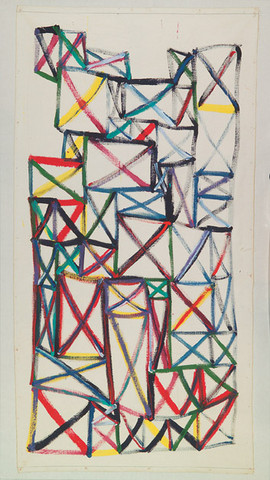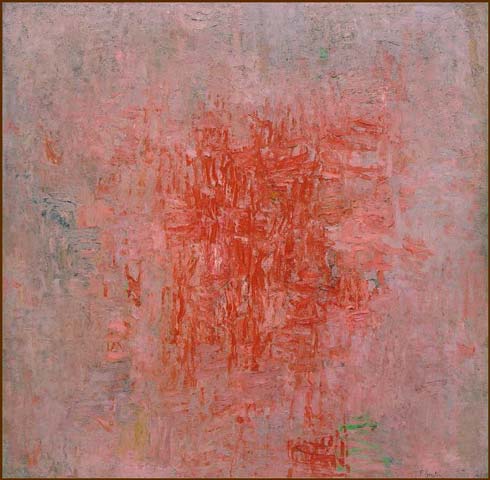as chance would have it, I come across this compelling image, "Untitled (abstract)" by Harry D. Bouras and want to see more of his work (especially like this), but then as I try to research him it's like pulling teeth from a frog.

Showcasing abstract paintings with writing or dots. Abstract calligraphy, postmodern pointillism, marks, gestures & scribbles, text and language based works.
 First, let me say that I am really, REALLY drawn to these first three works. Somehow, writing just "does it" for me. Don't know why or how, but I'm just always drawn to works that incorporate writing.
First, let me say that I am really, REALLY drawn to these first three works. Somehow, writing just "does it" for me. Don't know why or how, but I'm just always drawn to works that incorporate writing. wonderful white on white can be. It gives the effect of being a special cloth or probably a relief carving on stone.
wonderful white on white can be. It gives the effect of being a special cloth or probably a relief carving on stone.

 e evolved from the earlier Mimic and Eyeballing series. Produced by pouring white kaolin on to canvas , these paintings also re-present words and phrases; however, unlike earlier work, paint is then repeatedly poured on to the canvas until the words and phrases are almost, but not quite, obliterated. The weight of the settled paint, in turn, indents and smooths the soft canvas at it’s centre, both negating the act of writing and yet focussing our attention on the remnants of text - still legible to the viewer as they shift their position around the painting - that remain at the edges of the canvas ."
e evolved from the earlier Mimic and Eyeballing series. Produced by pouring white kaolin on to canvas , these paintings also re-present words and phrases; however, unlike earlier work, paint is then repeatedly poured on to the canvas until the words and phrases are almost, but not quite, obliterated. The weight of the settled paint, in turn, indents and smooths the soft canvas at it’s centre, both negating the act of writing and yet focussing our attention on the remnants of text - still legible to the viewer as they shift their position around the painting - that remain at the edges of the canvas ."
 as to how the art market is going to sort itself out. Deep down in our hearts we all know that it's not just talent. It really is all about who you know, what country your a citizen of, your sex sometimes, your ethnicity, your personality - all this comes into play. Gee, just like in real life. Too bad I don't have the big bucks to vote on who I think should be considered modern masters.
as to how the art market is going to sort itself out. Deep down in our hearts we all know that it's not just talent. It really is all about who you know, what country your a citizen of, your sex sometimes, your ethnicity, your personality - all this comes into play. Gee, just like in real life. Too bad I don't have the big bucks to vote on who I think should be considered modern masters.  Personally, I think he's over due for his due.
Personally, I think he's over due for his due.



 "Locus", 2006 oil and acrylic on panel 16x15"
"Locus", 2006 oil and acrylic on panel 16x15"


Cy Twombly in Houston in front of his gallery's largest painting, "Say Goodbye, Catullus, to the Shores of Asia Minor."
